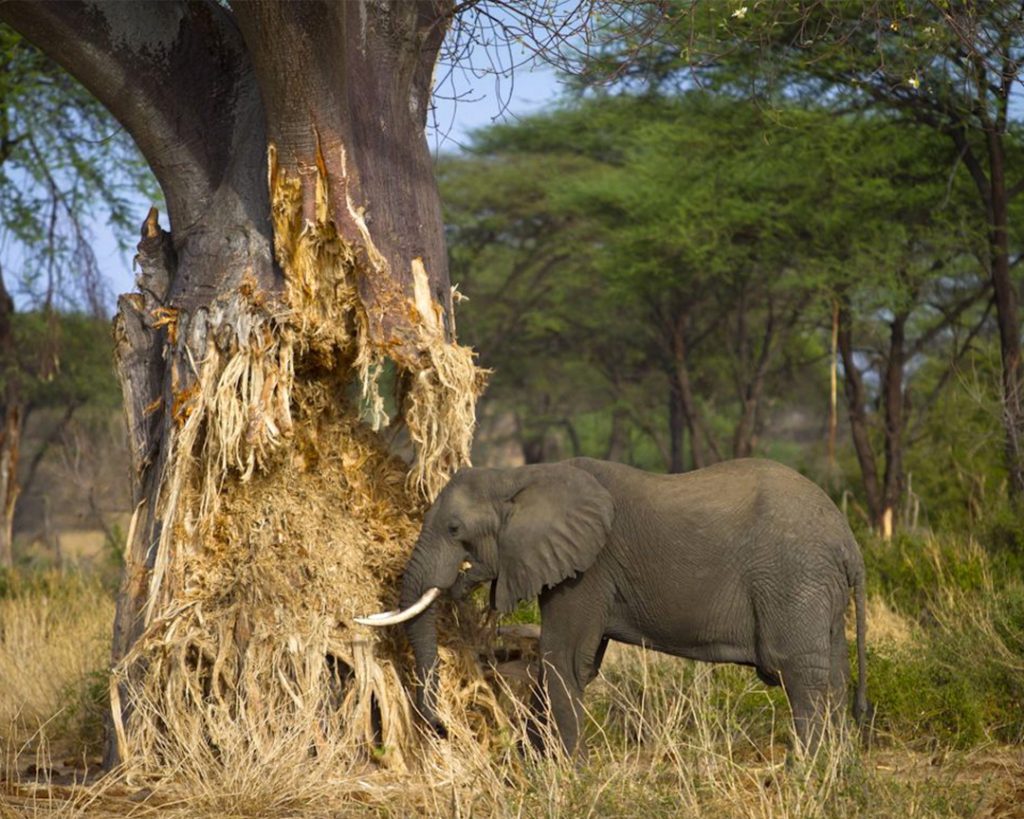You are walking through a Tanzanian marketplace bustling with colors and sounds. The sweet smell of cloves hits your nostrils just as several Maasai craftswomen wave you over to look at their intricate beading, art, and textiles. Never have you seen such beauty.
You are awake before sunrise and arrive to a boulder outcropping near Lake Eyasi. Three Hadza Bushmen greet your arrival, all wearing baboon skins and gripping bows and arrows. You are to join them for their morning hunt. Never have you been so excited.
You are hiking up Mount Kilimanjaro, part of a weeklong trek along the Machame Route to Africa’s tallest peak. You strike up conversation with a porter: he’s a young Chagga man who carries a large bag on his shoulders and smiles. Never have you been so humbled.
Some say a journey to Tanzania is like going to the beginning, like traveling to ground zero. But what you’ll find here aren’t tribes stuck in the past. No, you’ll discover more than 120 different tribal groups living very much in the present, a human tapestry weaving traditional with modern, rural with urban. Nowhere else in Africa can you find this level of tribal diversity. In fact, Tanzania is the only African nation whose tribes represent all four of the continent’s major ethnolinguistic groups—Bantu, Cushitic, Nilotic, and Khoisan. How cool is that?
Top 5 Tribes of Tanzania
Learning about all 120+ tribes would take a lifetime, so let’s cut to the chase. Here are five important and influential tribes you should know about, ones that you’ll most likely come into contact with during any adventure to Tanzania:
1 . Sukuma
- Estimated Population: 5.5 million
- Location: North. Near Mwanza and Southern Lake Victoria
- Language: Sukuma (Bantu – 95% are Tanzanians are of Bantu origin)
“The wind does not break a tree that bends,” is a famous proverb of the Sukuma, Tanzania’s largest tribe. They are mainly rural-living and many today practice Christianity. Polygyny is standard practice with the Sukuma, too, yet they are predominately a matriarchal society. Like many tribes in East Africa, dance and singing are hallmark activities. The Sukuma economy is mixed—growing crops and raising livestock. The Nyamwezi tribe is another large tribe in the region, culturally and geographically similar to the Sukuma.
Sources: (Source 1) (Source 2)
- Chagga
- Estimated Population: 2 million
- Location: Southern and eastern slopes of Mount Kilimanjaro.
- Language: Kichaga (Bantu)
“He who leaves a child lives eternally,” is a Chagga proverb hinting at the tribe’s emphasis on living through descendants. As Tanzania’s third largest tribal group, most Chagga members are farmers (millet, bananas, coffee, etc.) and many also now practice Christianity and Islam. Chagga are known for their strong work ethic, so if you decide to climb Kilimanjaro, chances are you will encounter members of the Chagga on your approach or as porters and guides.
- Maasai
Name: The name is Maasai and not Masai. They are people who speak Maa language. One of the few African tribe which retains most their traditions, lifestyle and customs (lore).
The Maasai people of East Africa live in southern Kenya and northern Tanzania along the Great Rift Valley on semi-arid and arid lands. The Maasai occupy a total land area of about 160,000 square kilometres with a population of approximately one half million people (1,500,000).
View Full Article on Maasai Tribe
- Hadzabe (Hadza)
- Estimated Population: 1,200-1,300
- Location: Simple dwellings and caves around Lake Eyasi.
- Language: Their unique language, popular for its use of clicking sounds, is unrelated to any regional language.
The Hadzabe are a small hunter-gatherer tribe, one the world’s last remaining of its kind. Without livestock or agriculture, most mornings start with hunting and foraging, adhering to a simple diet that many believe holds the key to health. (Source). Gender roles are distributed where men typically hunt on their own to bring home meat and honey, while women and children gather fruits, berries, and roots.
Hadzabe Tribesman Spotted In Tanzania
- Iraqw
- Estimated Population: 350,000.
- Location: North-Central. Arusha Province and Lake Manyara regions.
- Language: Iraqw (Cushitic)
Most of the Iraqw population is concentrated on the Mbulu Plateau, between Lake Manyara and Lake Eyasi. Tribal Travel Safari pass through Iraqw territory. It is said that the Iraqw were the first tribe to settle the Ngorongoro Crater. (Source) The Iraqw tribe is known for their sharply defined features, blacksmithing (men) and pottery (women), and they often grow their own food and tend to cattle. (Source)
Part of the Iraqi community showing off their local traditions in Tanzania
The Bottom Line:
Any adventure to Tanzania can include world-class safaris, hiking, and beachcombing, but it also offers some of the most unique opportunities on the planet to learn about our shared human story, past and present. The diverse intersection of tribes, of languages, folktales, and music converges in Tanzania and invites you into its swirl of celebration. Are you in?

